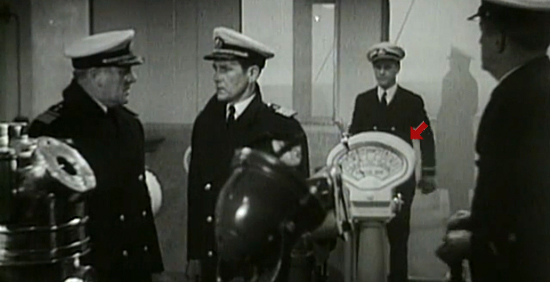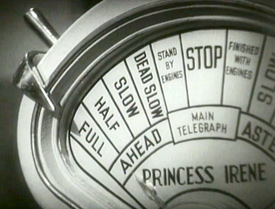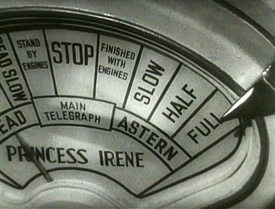We’re surely not the first old-movie buffs to notice that there are many more scenes set on cruise ships in pictures from the 1920s, ’30s and ’40s than in contemporary movies. And traveling by boat in those days included no karaoke bars, miniature golf, or rock-climbing walls.
No, activities on an oceanic cruise in those days were limited to drinking cocktails, strolling the decks, reading, playing cards, and if you were lucky, falling in love with an urbane and sophisticated escaped convict or a beautiful woman with a terminal illness.
We love scenes—heck, even entire movies—set on cruise ships, and we’ve often found ourself wondering what the wording was on the thing the captain (or one of his underlings) uses to signal (we think) the crew in the engine room that it’s time to power up (or power down) the ship. (We have no earthly idea what the darned thing’s called—it resembles a white sign that has various words and phrases on it and a lever that one moves from one end to the other, with stops along the way—if you’ve seen an old movie with extensive cruise ship footage in it, you’ve probably gotten a glimpse of one.)

We finally came across a movie—History Is Made at Night (1937), directed by Frank Borzage and starring Jean Arthur, Charles Boyer and Colin Clive—that features not one but two close-up shots of this mysterious device. Finally, we can make out what words and phrases appear on it. And so can you. (FYI: “Princess Irene” is the name of the ship.)
 |
 |
We’ll never view another scene set on a cruise ship’s bridge the same way again.
